The secrets of «Dobroflot»,
or how mother ships produce canned food directly into the sea
Man and the ship «Vsevolod Sibirtsev»
-
179,2
meters
of the vessel length -
45
meters of the vessel height -
600
crew members -
9
months of autonomous work in the ocean -
700 000
kg of fish per day
The flagship and its fleet

«DOBROFLOT» produces canned food right at sea, onboard the mothership.
However, mothership does not catch the fish but processing the catch harvested by 5 smaller trawlers fishing arround.Captain is the boss on ship and his fishing success is based on sonar readings and, as always on his professional flair.
Canned food: from the sea to a can for 3 hours

As soon as fish on board, trawlers rush to the mothership to discharge the catch and soon leaving back to the fishing ground. The fish are “pured” by the small batches in order to avoid any damage. Then batches are come to the charging hopper in mothership’s factory where will be processed.

First, all fish to be graded. Moreover, the crew personnel always ensured that there are no other fish species or foreign bodies involved.
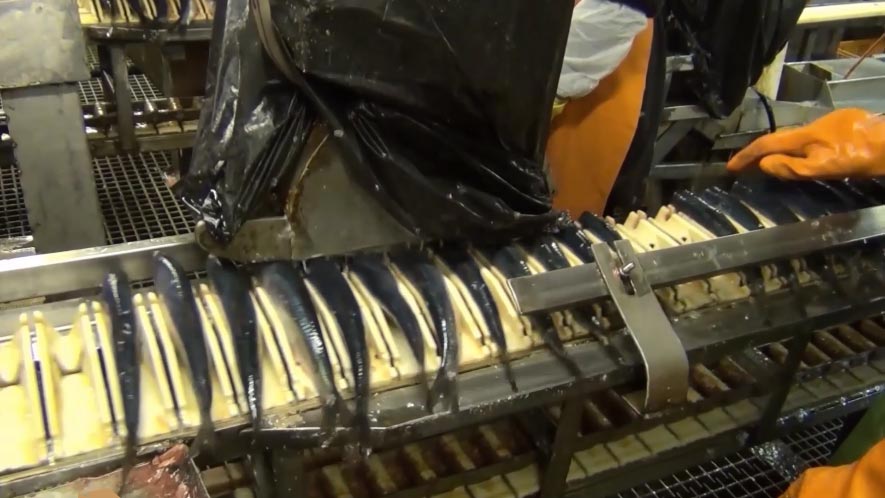
After grading, fish will be spltted. Heads and tails are cut off, then fish is gutted.
Onboard factory is the high efficient wasteless production. Fish oil and fishmeal are produced from heads, tails, small and crumpled fish. It is a valuable source of protein for the poultry.
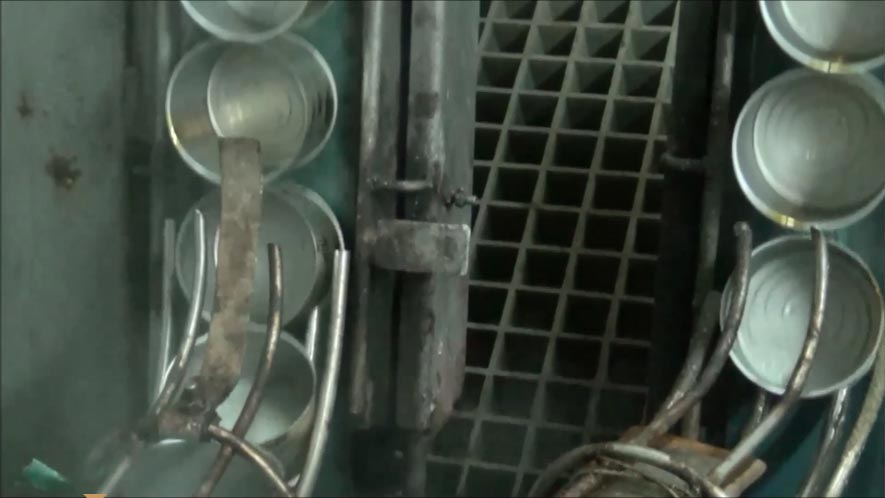
Then empty cans are pretreated with steam.
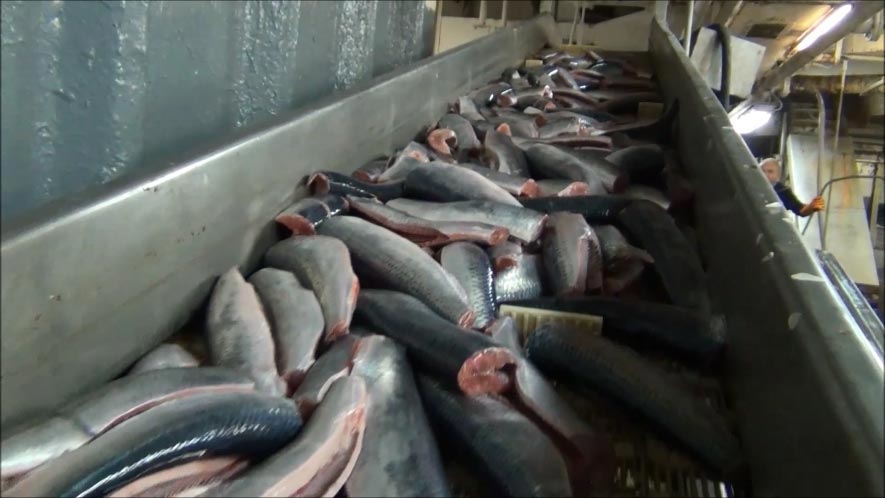
Gutted fish carcasses are washed and sent to the packing area, where they are placed in a can.
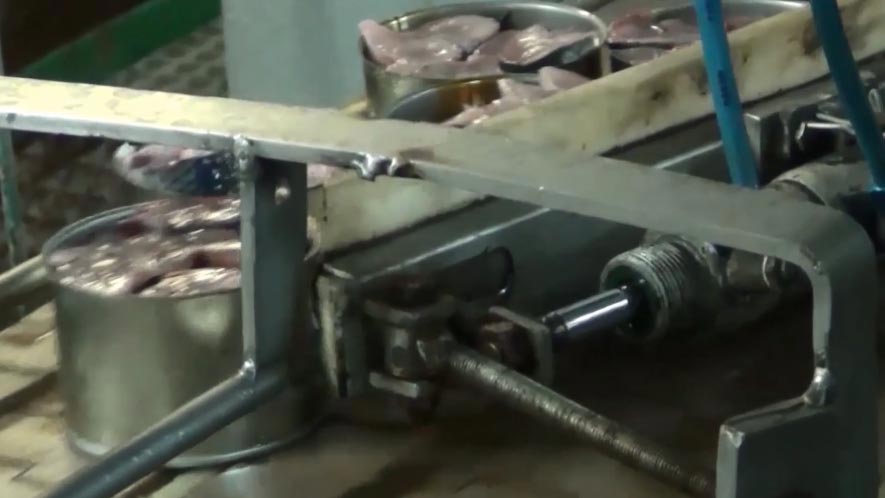
Each can is stuffed with fish tightly under the lid. The controller will notice any deviation from the specified weight at the weight control.
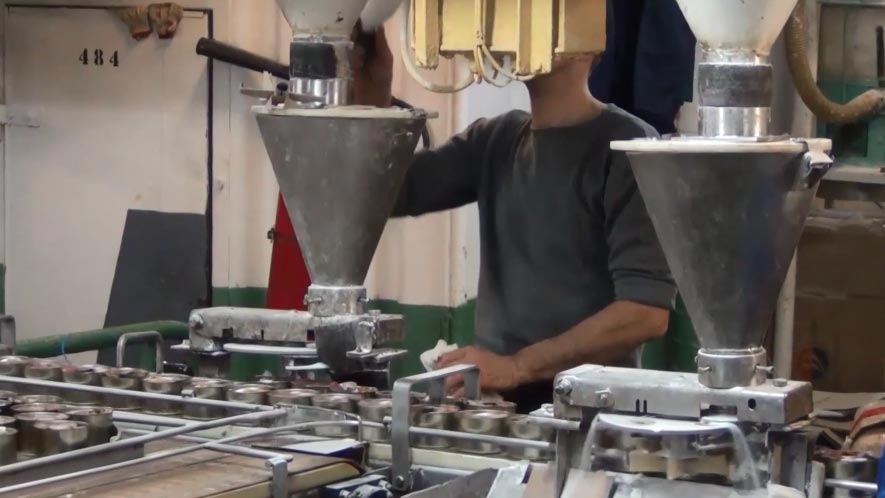
Then salt and spices are added to these cans: bay leaf and black pepper. Cans are rolled tightly with a lid under vacuum and are sent for sterilization to the autoclave.
«Dobroflot» canned food does not contain preservatives, dyes and synthetic additives
«Dobroflot» canned food does not contain preservatives, dyes and synthetic additives
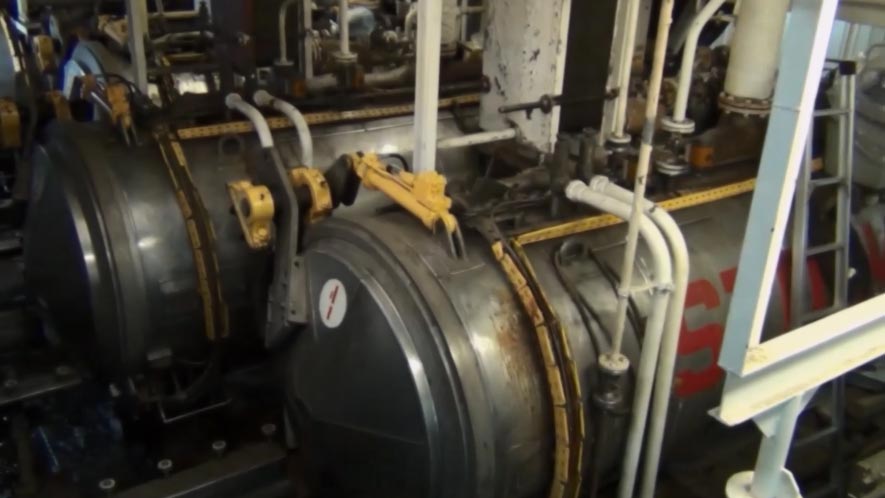
Closed cans are placed into autoclaves and are boiled there for 55 minutes at 120°C.
Sterilization technology in an autoclave helps to save the maximum of useful fish properties
Sterilization technology in an autoclave helps to save the maximum of useful fish properties
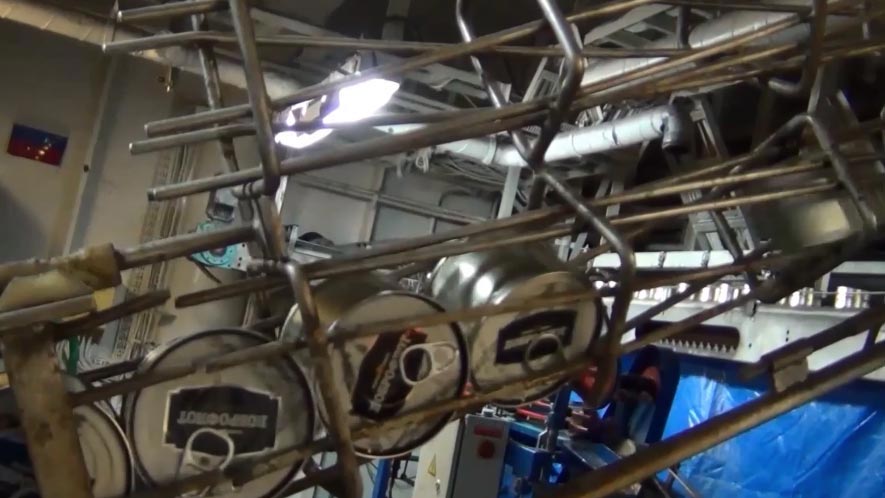
Canned food is ready when the cans are labeled. Then they are put into boxes and are loaded into the hold. There they will be ripening for 12 days according to the technology and will be waiting for a vessel that will take them to the mainland.
It takes in average 3 hours from catch to the finished product
Canned food like good wine is getting better with time. During ripening, salt and spices are evenly distributed throughout each piece of fish, making it juicy and flavored.
It takes in average 3 hours from catch to the finished product
Canned food like good wine is getting better with time. During ripening, salt and spices are evenly distributed throughout each piece of fish, making it juicy and flavored.
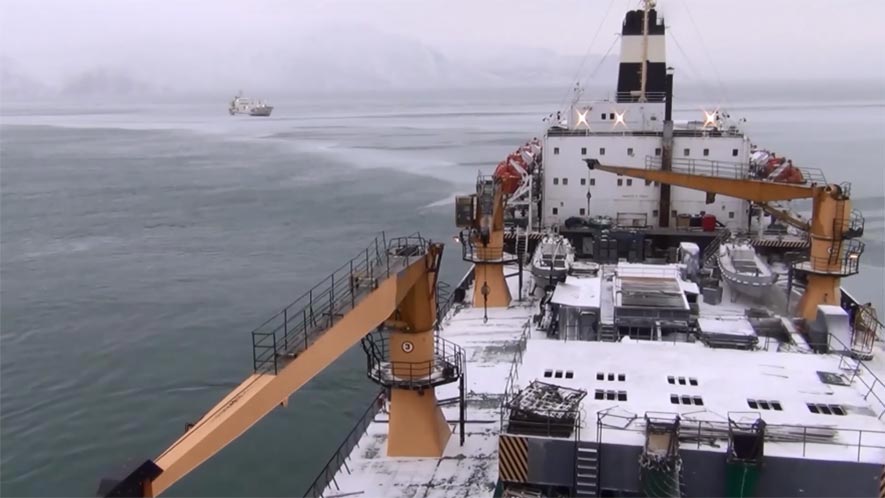
Every few days a cargo ship moors to our mother ship. We load finished products to it and take provision, water, and other supplies. Then canned food are delivered to the stores by land. Their thousands miles' journey ends on your dining table.
Wild fish vs man made
The healthiest fish are wild. It hunts for food, lives and spawns in the ocean. But it is not easy to catch and to treat such fish: we need trawlers and mothership. We shouldn't be mistaken with the weather and the place.
That's why man learned to grow fish in captivity. It is fed with man-made fodder, hormones, vitamins, antibiotics. Some dyes are added for the "right" shade of the fish meat. All this affects the product quality.
If you care about your health — choose wild fish.


